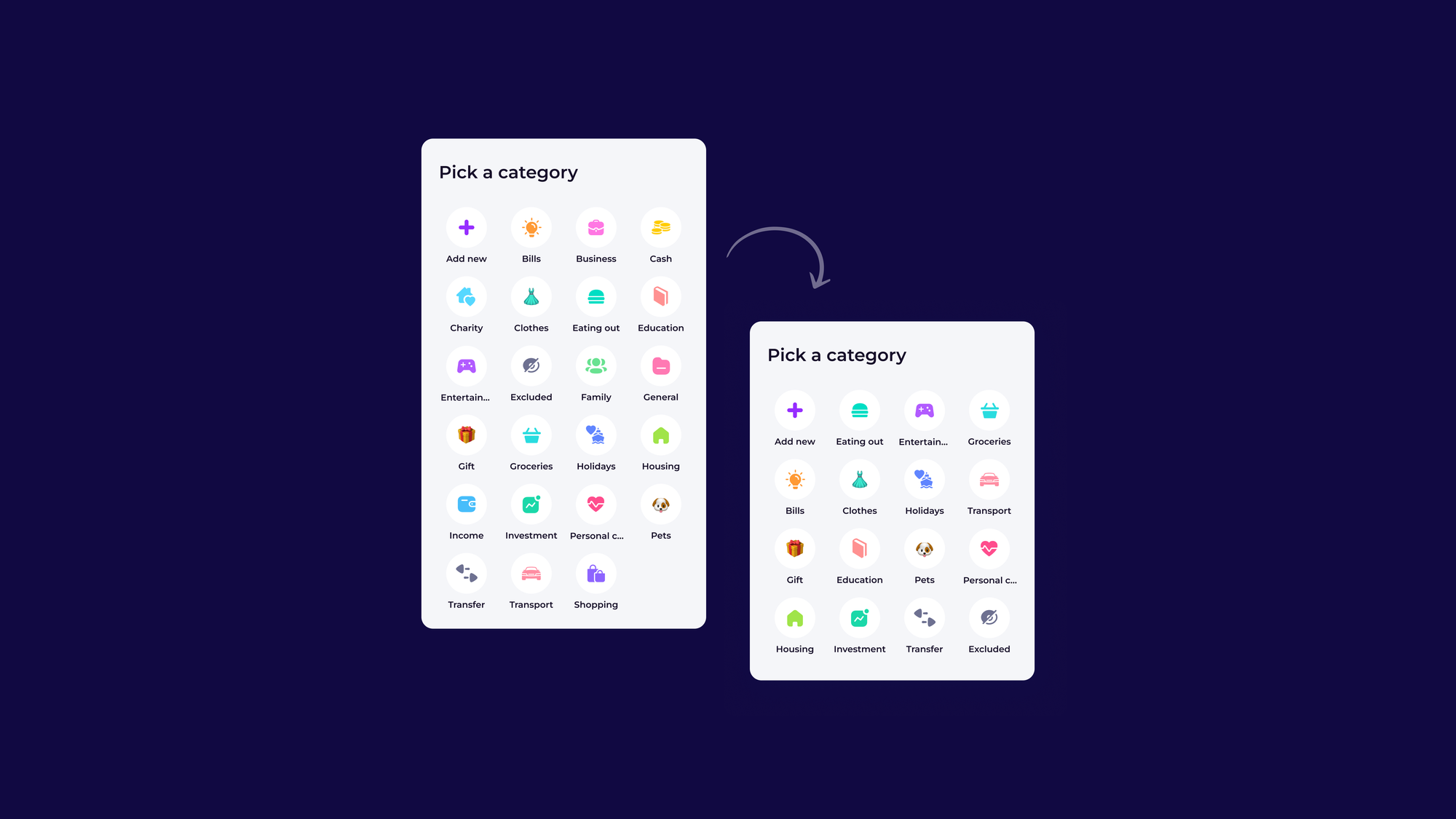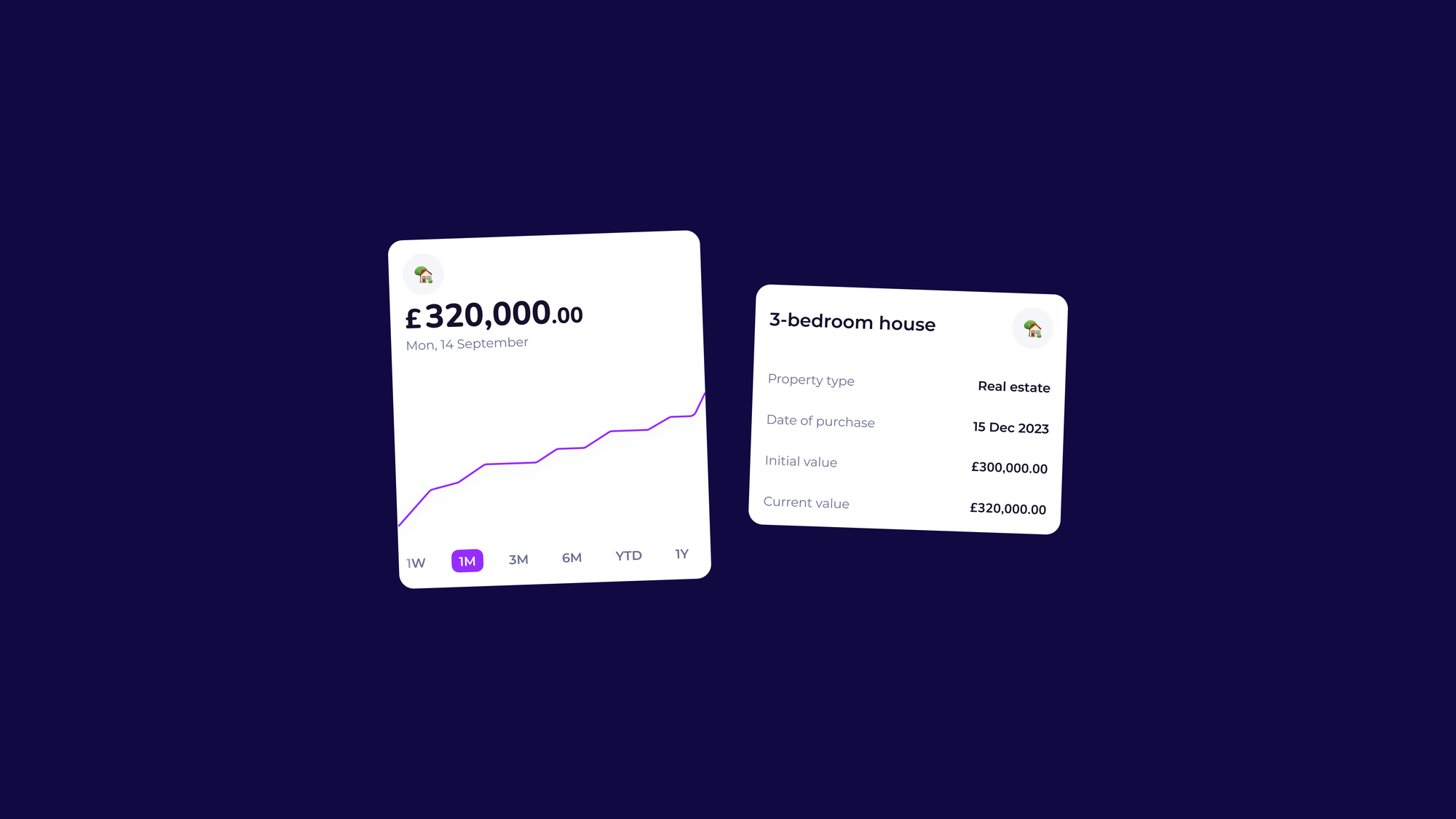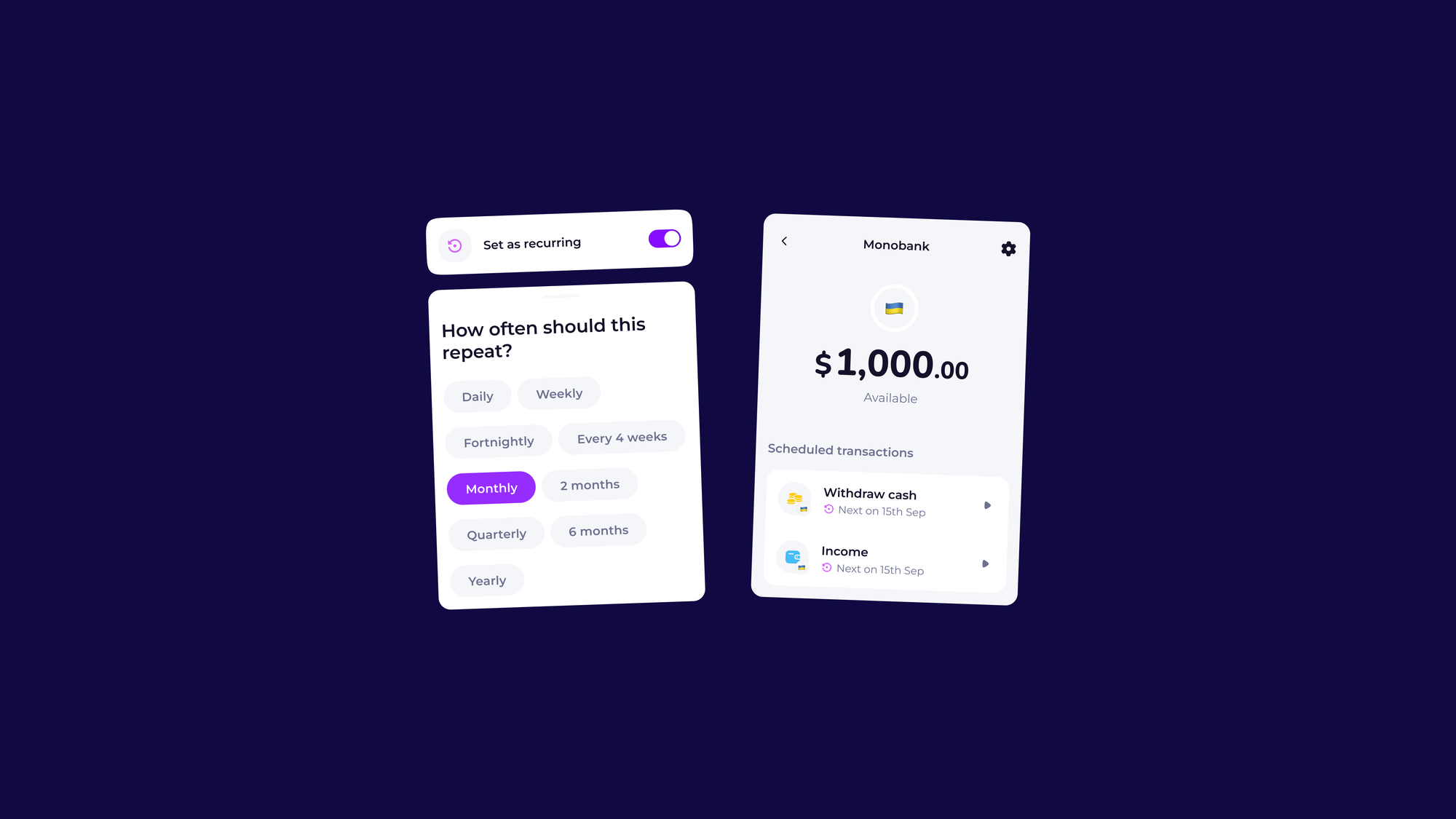FEATURED ARTICLE
Feed self belief, not self delusion: Tivix chats with Edoardo Moreni

Rebekah May
July 2, 2021 •8 min read
Hey Edoardo, can you please introduce yourself.
I'm Edoardo Moreni, CEO and co-founder of Emma. Our mission is to help people save and optimize their spending. The way we do that is by connecting all your bank accounts and providing insights about how you interact with your money. We now have thousands of users on Emma, having launched in January 2018.
What prompted the creation of Emma? Was there an issue or pain point in your own life that highlighted the need for the product?
It started when I was studying computer science at Manchester - there were a few episodes in uni life which really made me reflect on the role banks play in our lives. For example, I ended up being in an overdraft for one of my accounts and the bank couldn't care less. They didn’t let me know or advise me to do anything about it, because they make money out of overdrawn accounts.
I also realised that I had paid for Netflix for a whole year without watching anything!
All these small events made me think about opportunities to build a tool to help consumers stay on top of their finances and provide personalized advice in a way that a bank doesn’t have an interest in. There was a huge gap in the market for an impartial, helpful money management platform.
Since you created your MVP, Emma has changed a lot. Casting your mind back to the beginning, did you build the first iteration of the product in-house or did you outsource?
That was done completely in-house. My co-founder and I are engineers, so I built the frontend of the product and he built the backend. It was exciting because it was an extremely fast release, and we were working on customer support and everything else at the same time.
We managed to quickly release to the first 30,000 users. We created a really strong feedback loop, which allowed us to build on top of the advice we received. Our feedback processes have definitely evolved, because when you’re listening to the first couple of hundred users they normally speak in similar terms and identify similar features they would like. When you have thousands, things become more fragmented and it’s more difficult to pick up on trends, so now we rely more on analytics tools and tracking.
When we started, we looked at the three most basic things that anyone wants when managing their finances - tracking balances, setting budgets and tracking subscriptions. Now that we’re good at that, we’re expanding into investments, pensions and more. Essentially, we want to take care of all of those experiences you’d have around your current account without being a current account ourselves.
Rolling out features based on community insights is one of your biggest strengths, I think. How vital do you think that feedback loop is in the early stages of building a product?
It’s the only way to do it! You might have some sort of intuition about what your product should look like, but at the end of the day you need to put something into the hands of your user base to gauge whether they like it. Acting on that feedback to give people a product they really need is a key part of building a consumer product that will retain users over a long period of time.

You mentioned that you and your co-founder built the product yourselves because you both had engineering backgrounds. How did you find making that first technical hire?
We opted for a lot of engineers in the early days to build the product as fast as possible. That was our main focus back then. It’s the best feeling ever because you can finally delegate and focus on the bigger picture - what you’re doing next, how to grow and what to focus on as a company.
I’m excited to take the company further and hire the next 20,50, 60 employees - also I got bored of coding! I think that freeing up time in that sense is great for the company and for the founders because then you can really take the time to think things through and understand the bigger picture.
If you were building an MVP now, for a new product, would you do anything differently?
I would take more risks and move ten times faster. That’s a typical trait of serial entrepreneurs who know what it takes to set up a company, what your first priorities should be and how to get a business past the 30 employee mark.
I think that if I set up a company today, I could replicate the last three years in six months. That's why, when you look at second-time entrepreneurs, they usually get a lot of money to start with - their plan is laid out, they're already comfortable with the process and they know how to move super fast.
For us, we were figuring out all of this stuff as we went along. I remember we had the opportunity to hire someone I was good friends with at university. They wanted a certain salary and we were very stubborn about it. If I was in a similar position today I would give them more than they asked for, because when you’re a really small team, you want to hire the best so that you can move fast. Settling for average to save money will slow you down. I’m not even risk averse as a person! But when it comes to financial burn rate and spending money, we could have taken a lot more risks.
Another piece of advice: hiring interns when you’re a team of four or five people is a huge challenge because you need to spend time teaching them their job. They take up a lot of time, even if they are cheaper to hire.
You mentioned you had that community of people at the beginning with whom you created a feedback loop for Emma. Could you tell me a little more about the process of acquiring your first customers?
There are two parts to our story here. Before launching in the UK we tried something similar in Berlin. We were live for six months and we ended up with about 50 users. It was one of the most depressing times of our lives.
So we moved to the UK where we thought that the culture was a better fit. In the UK, we had 50 users in two hours. It’s a completely different society from a money perspective, because in Germany 60% of transactions are cash-based, and they’re much more sensitive to data privacy concerns on a personal level.
Our first UK customers came from a queueing system we devised. We launched a waiting list to adopt the product, which we promoted relentlessly. This gave us around 200 new users. We also launched on Product Hunt, which gave us 900 more.
Then we integrated the Monzo API and got invited to an event that was held by Monzo in 2017. We got an extra hundred users that night, and someone posted about us on the Monzo community forum, which turned into a really big acquisition channel for us.
What got us past the 2,000 user mark were two big events in January 2018 - we got approved by the FCA and City AM randomly featured us in their magazine, both online and in print.
It’s interesting that you were struggling with your product-market fit, but instead of reinventing your product, you believed in Emma so much that you just took it to another country!
At the time it was funny because people were telling us to move back to the UK, and we completely ignored them. We were so determined to stay there and make it, even though we didn’t speak any German and had to do our customer support via Google Translate. We definitely learnt a lot from it though, which we put into practice building Emma.
It was obvious it wasn’t going to work by the second month, but we stayed another four. That’s definitely another trait of entrepreneurs - they tend to lie to themselves about these things. You need to be careful about doing that. It’s difficult to just step back and admit it’s not working and you need to make a big change.

It sounds like everything that went wrong for you in Germany went right for you in the UK?
That was it. For us, it was poor country fit; for others it might be more product-related. Listen to that feedback. As I said, people lie to themselves and you need to be aware of that if you’re starting a business, but if we’d given up and got jobs at a tech company we wouldn’t have this crazy story to tell. There’s a balance to be struck between lying to yourself and giving up too easily.
I want to come back to Emma's community because it sounds like your community has been such a massive part of Emma's development as a product. How do you keep that community alive after the initial buzz?
Twitter and Facebook were really channels for discussion. It's not just about media announcements, but also about building rapport - light-hearted interactions and talking about features we have coming up. The conversations don’t have to be particularly serious.
And then on top of that, we also have a forum connected to the app, which you can access at any point in time. So we have a few different channels where we can interact with our users on an ongoing basis. That's what works for us.
You mentioned that at the beginning of your journey in the UK, you ended up using the Monzo community to grow. How important was finding that community that really ‘got’ your product?
It’s all about finding a small niche or group of people you can leverage first - I think that’s the key to gaining traction, no matter what the industry. It was clear that the Monzo community was active and ready to try new products, which gave us an edge. Other fintechs have tried to do something similar, but they were probably a little late to it. We really invested in it early on.
So what's next for Emma? What do your plans for the next couple of years look like?
So far, we’ve been great at helping users track and manage their money, but we’ve never taken an active role in holding money or encouraging users to purchase or invest. We think that the future for Emma will offer a much more integrated experience with banking.
We're currently working on payments, so users can pay friends through Emma, see their credit score and get a credit report twice a month. We’d like to offer pensions, savings, and investments - including stocks and crypto - and bring all of these things under one umbrella to create an experience that goes beyond simple tracking.
We've actually recently released our full public roadmap. You can see it here.

One quick, final question: what was the biggest lesson you learned in the process of creating Emma?
It’s painful and I advise people not to do it!
Seriously though, it is painful and you need to be completely bananas to do it. If you have an idea that you are genuinely passionate about, go for it. Otherwise, get a job and live a nice life - there’s no point putting in this much work otherwise.
The main lesson that you learn is perhaps you need to be a little naive to get into it. You need to be completely unafraid of taking risks, and you need to have the energy to endure a lot of setbacks and headaches. It’s all about being able to endure a lot for the sake of your company.
Key takeaways:
- Self belief is great, but can quickly snowball into self delusion. Listen to feedback you’re getting to keep yourself grounded.
- Your team will make or break your product. Invest as much as you can in top talent.
- Creating a customer feedback loop is essential if you want to build a loyal customer base and a product with a good market fit.
- Entrepreneurship is hard! Only commit to the journey if you are genuinely passionate about what you are doing.
This interview first appeared on Tivix.com. Tivix is a software development agency specializing in django, react and front-end web development headquartered in San Francisco (clients include Apple, UNICEF, Tesla).
You may also like
Check out these related blog posts for more tips
© 2025 Emma Technologies Ltd. All Rights Reserved.
Emma is registered and incorporated in England and Wales.
Emma Technologies Ltd is an appointed representative of RiskSave Technologies Ltd, which is authorised and regulated by the Financial Conduct Authority (FRN 775330).
Payment services (Non MIFID or Deposit related products) for Emma Technologies Ltd are provided by The Currency Cloud Limited. Registered in England No. 06323311. Registered Office: Stewardship Building 1st Floor, 12 Steward Street London E1 6FQ. The Currency Cloud Limited is authorised by the Financial Conduct Authority under the Electronic Money Regulations 2011 for the issuing of electronic money (FRN: 900199). For more detail on how your money is protected please see here. You can also find Currency Cloud's Terms of Use here.
Emma Technologies is an Introducer Appointed Representative of Quint Group Limited and not a lender. Quint Group Limited is authorised and regulated by the Financial Conduct Authority (Firm Reference Number 669450). Monevo Limited is an Appointed Representative of TransUnion International UK Limited. TransUnion is authorised and regulated by the Financial Conduct Authority (Firm Reference Number 737740). Emma Technologies introduces customers first to Quint Group Limited, as a licensed credit broker, who then refers on to Monevo Limited.
Emma is registered with the Financial Conduct Authority under the Payment Services Regulations 2017 for the provision of payment services.
Financial Conduct Authority Reg Nr: 794952.
Company Registration Number: 10578464.
Data Protection Registration Number: ZA241546.
All testimonials, reviews, opinions or case studies presented on our website may not be indicative of all customers. Results may vary and customers agree to proceed at their own risk.
Resources: Cancel subscriptions, Cashback offers, Who charged me, Rent Reporting, Budgeting, Investment universe, Emma vs Moneyhub.
Featured cashback offers: Samsung, SimplyCook, NordVPN, Audible, M&S Homeware.









